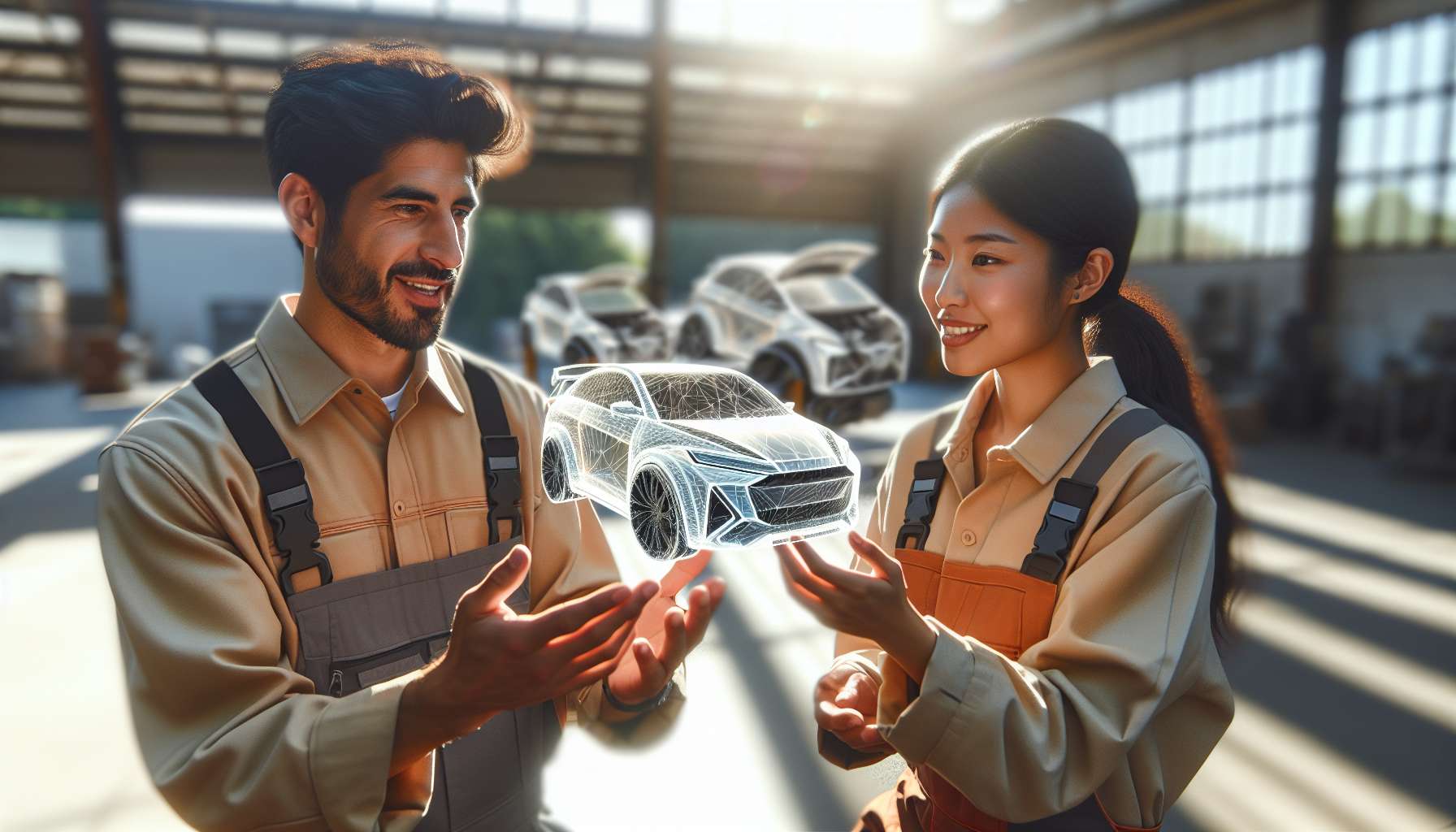Revolutionizing Automotive Design with Augmented Reality
Augmented Reality (AR) has emerged as a game-changing technology in various industries, and the automotive sector is no exception. By seamlessly blending virtual elements with the real world, AR is transforming the way automotive designers conceptualize and create new vehicles. In this article, we will explore the numerous benefits of AR in automotive design and how it is revolutionizing the creative process.
1. Enhanced Visualization and Collaboration
AR allows designers to visualize their ideas in a realistic and immersive manner. By overlaying virtual elements onto physical prototypes or existing vehicles, designers can see how different design elements, such as colors, textures, and shapes, will look in real-world scenarios. This enhanced visualization enables designers to make more informed decisions and iterate designs more efficiently.
Furthermore, AR facilitates collaboration among designers, engineers, and other stakeholders. With AR-enabled devices, multiple team members can view and interact with the same virtual design simultaneously, regardless of their physical location. This real-time collaboration streamlines the design process, reduces errors, and fosters innovation through collective input.
2. Streamlined Design Iterations
Traditionally, automotive design iterations involved creating physical prototypes, which were time-consuming and costly. AR eliminates the need for physical prototypes by allowing designers to make virtual modifications and instantly visualize the changes. This significantly speeds up the design iteration process, enabling designers to explore multiple design options and refine their ideas more efficiently.
Moreover, AR empowers designers to test different design elements, such as lighting effects, materials, and finishes, without the need for physical implementation. This not only saves time and resources but also provides designers with a broader range of possibilities to create innovative and visually stunning automotive designs.
3. Improved Design Evaluation and Validation
AR offers designers the ability to evaluate and validate their designs in a more comprehensive and realistic manner. By overlaying virtual elements onto physical vehicles or environments, designers can assess how their designs will look and function in real-world conditions. This allows them to identify potential design flaws, optimize ergonomics, and ensure that the final product meets customer expectations.
Additionally, AR enables designers to conduct virtual simulations and tests, such as wind tunnel analysis or crash simulations, without the need for expensive physical setups. This not only saves costs but also provides designers with valuable insights into the performance and safety aspects of their designs, leading to better overall vehicle quality.
4. Enhanced Customer Experience
AR is not only transforming the design process but also enhancing the customer experience. Automotive manufacturers can leverage AR to provide customers with immersive and interactive experiences, allowing them to visualize and customize their vehicles before making a purchase.
With AR-enabled mobile apps or showrooms, customers can explore different vehicle configurations, experiment with various colors and options, and even take virtual test drives. This not only helps customers make more informed decisions but also creates a personalized and engaging buying experience, ultimately leading to increased customer satisfaction and brand loyalty.
5. Future Possibilities
The potential of AR in automotive design goes beyond the current applications. As AR technology continues to evolve, we can expect even more exciting possibilities in the future. For instance, AR could enable designers to create virtual showrooms, where customers can experience and interact with vehicles in a completely virtual environment.
Furthermore, AR combined with artificial intelligence (AI) could revolutionize the design process by generating intelligent design suggestions based on customer preferences, market trends, and performance requirements. This fusion of AR and AI has the potential to unlock unprecedented levels of creativity and efficiency in automotive design.
Embrace the Future of Automotive Design
Augmented Reality is revolutionizing the automotive design process, offering enhanced visualization, streamlined iterations, improved evaluation, and a superior customer experience. By embracing AR, automotive designers can unlock their creative potential, accelerate innovation, and stay ahead in an increasingly competitive industry. The future of automotive design is here, and it’s augmented.





